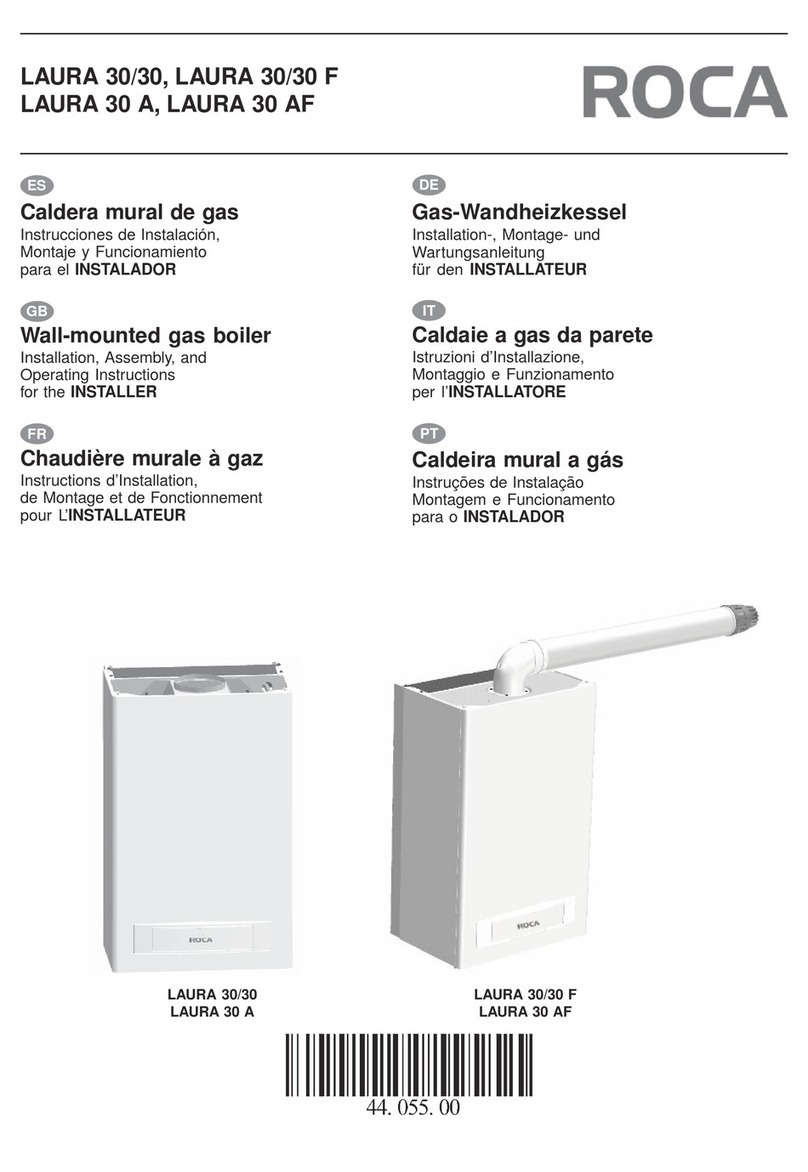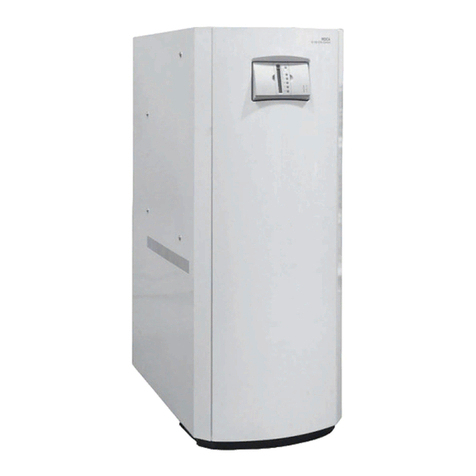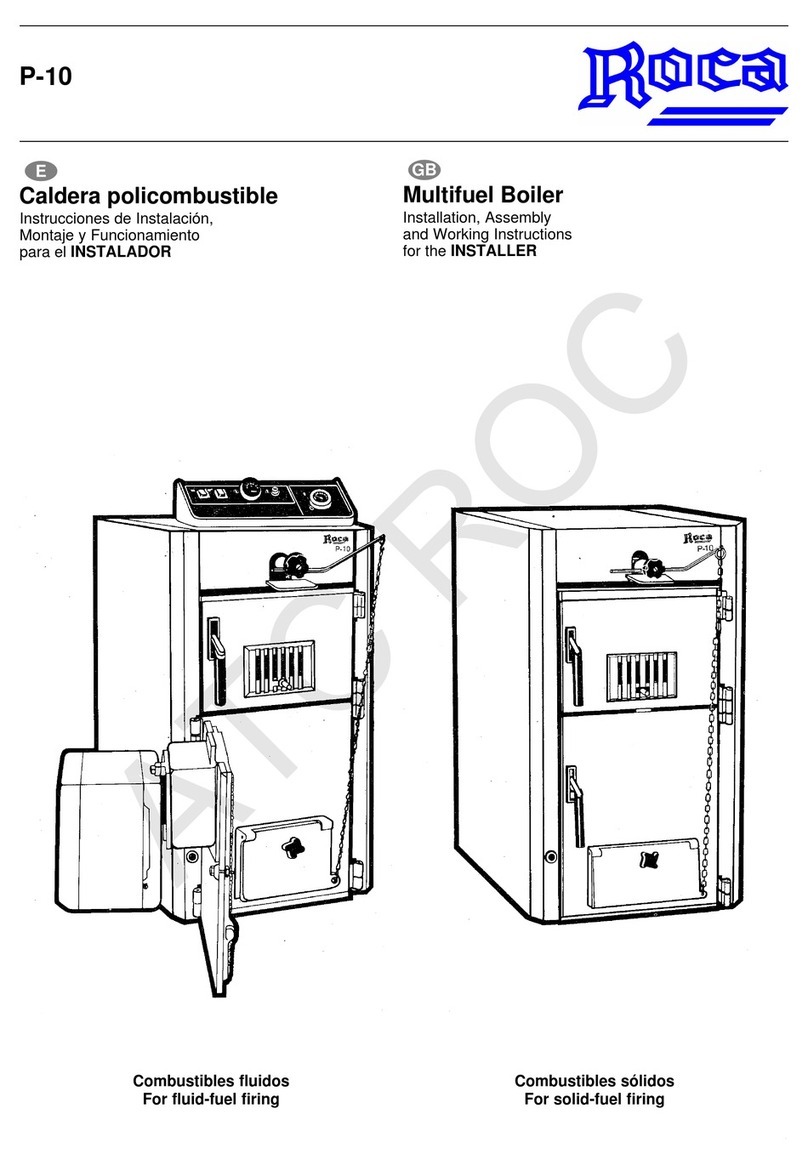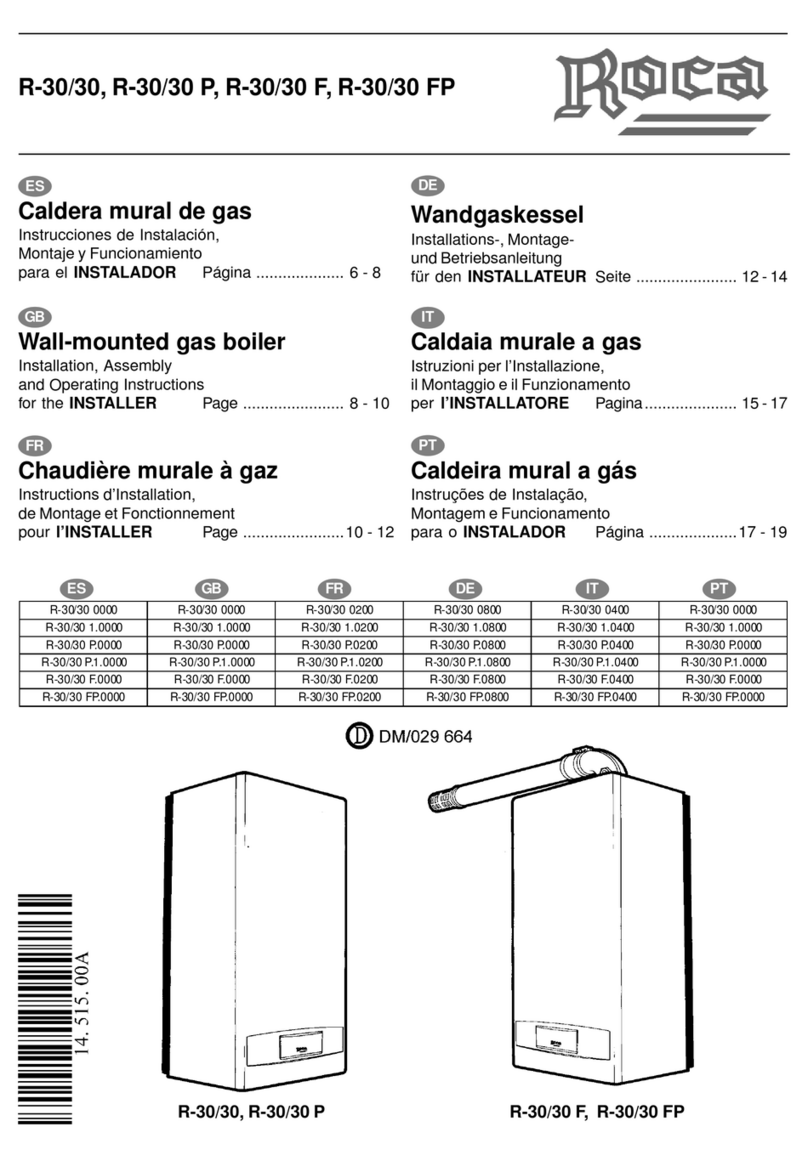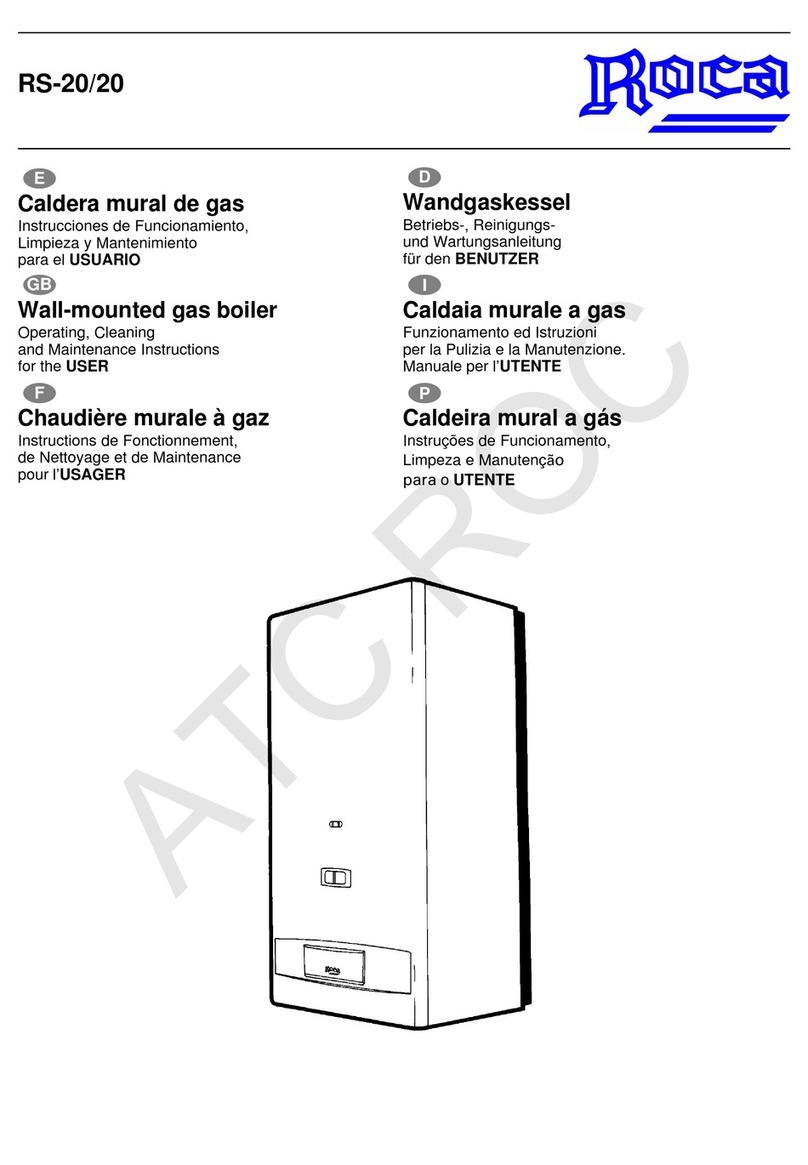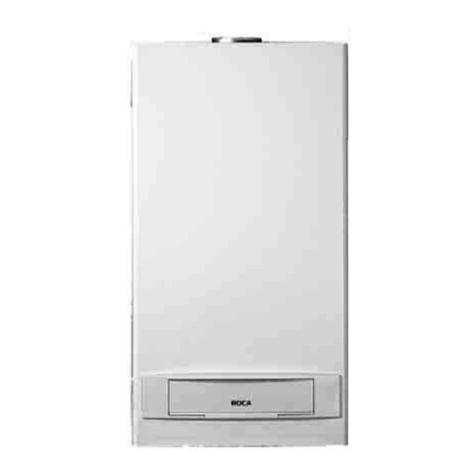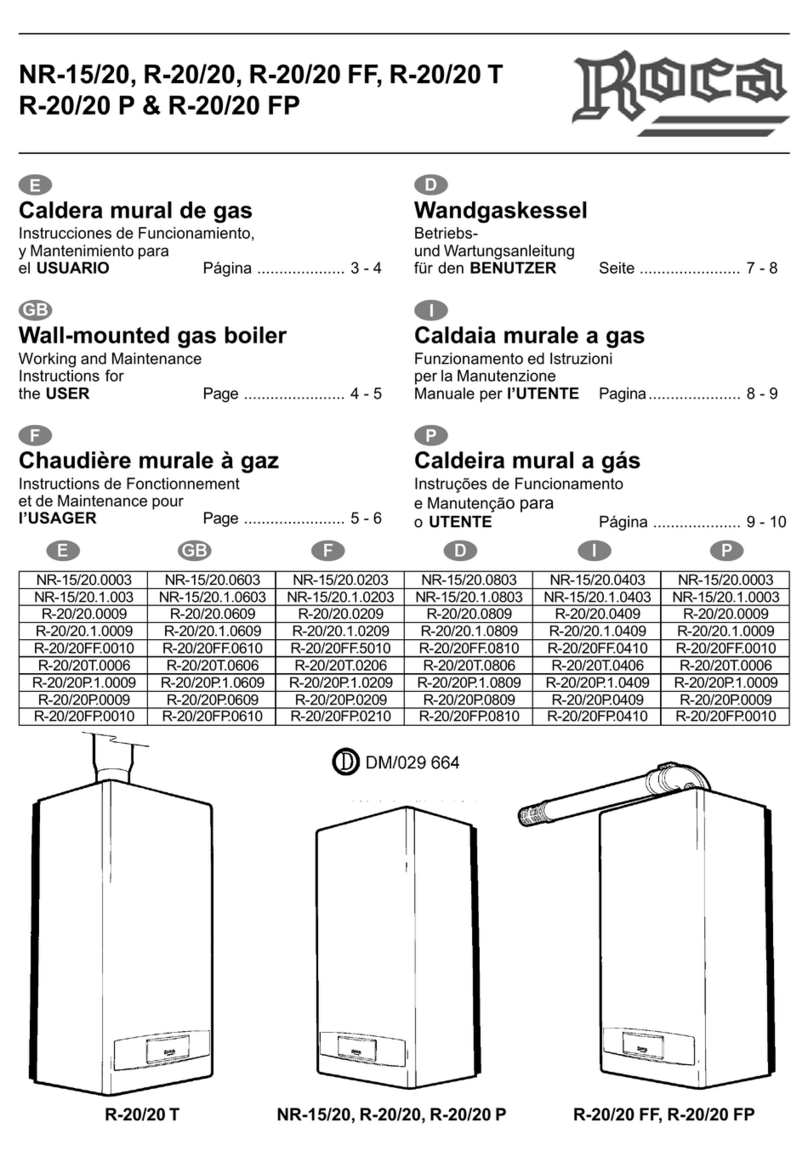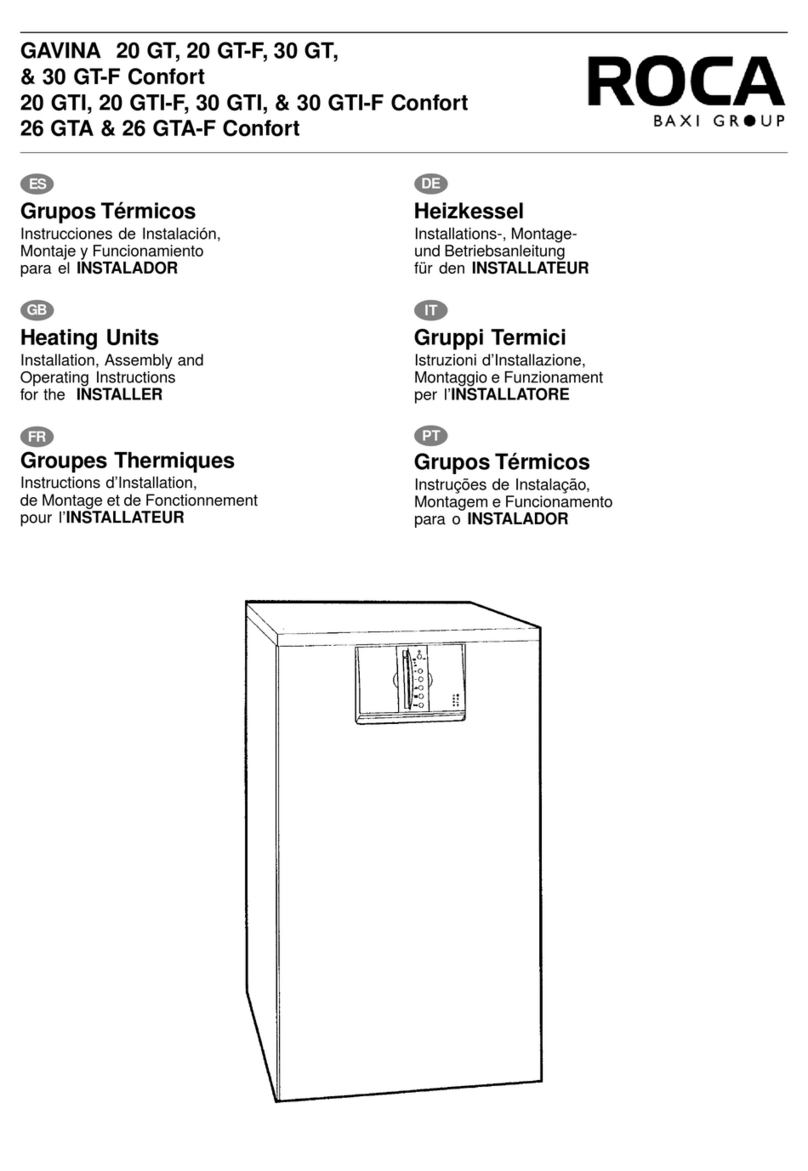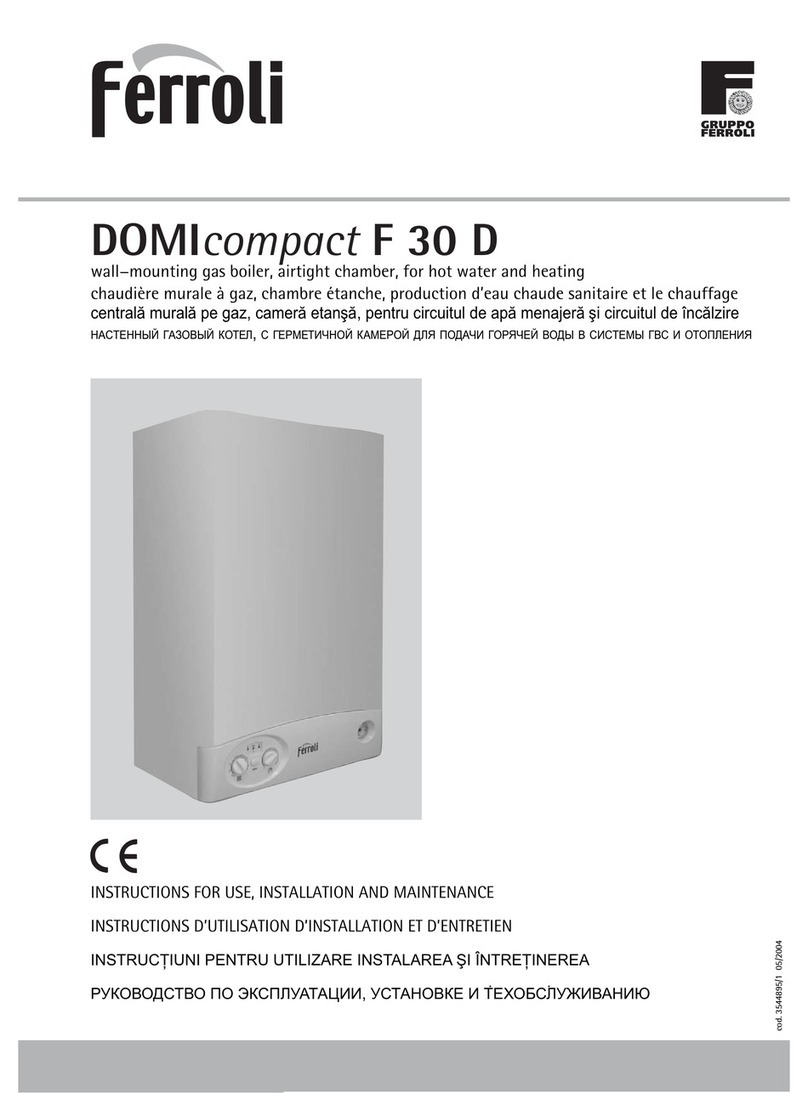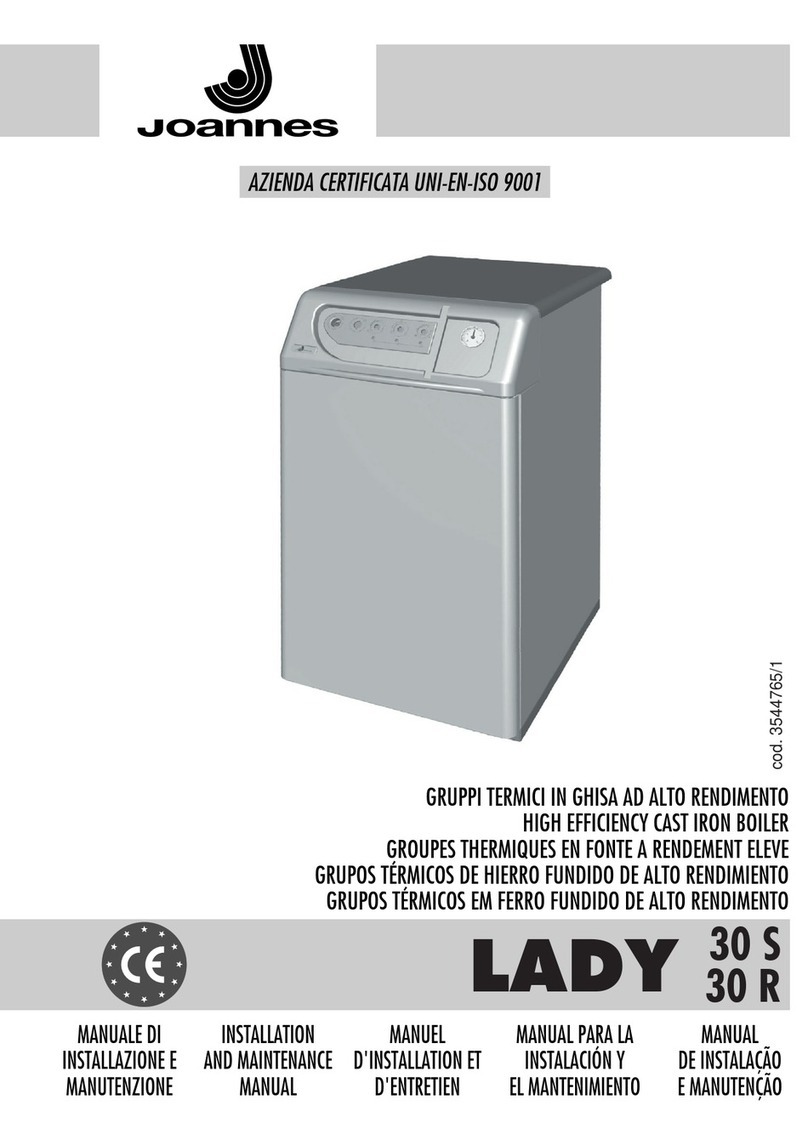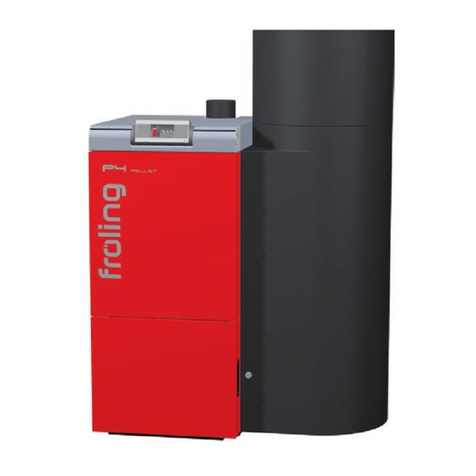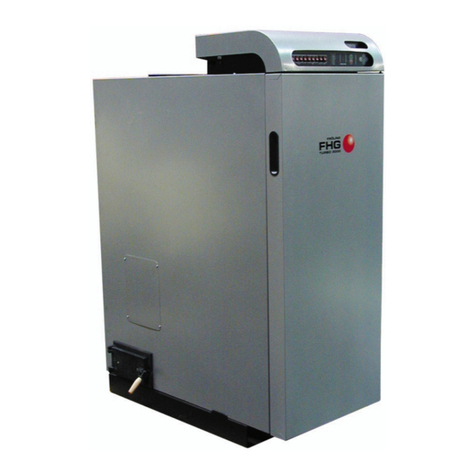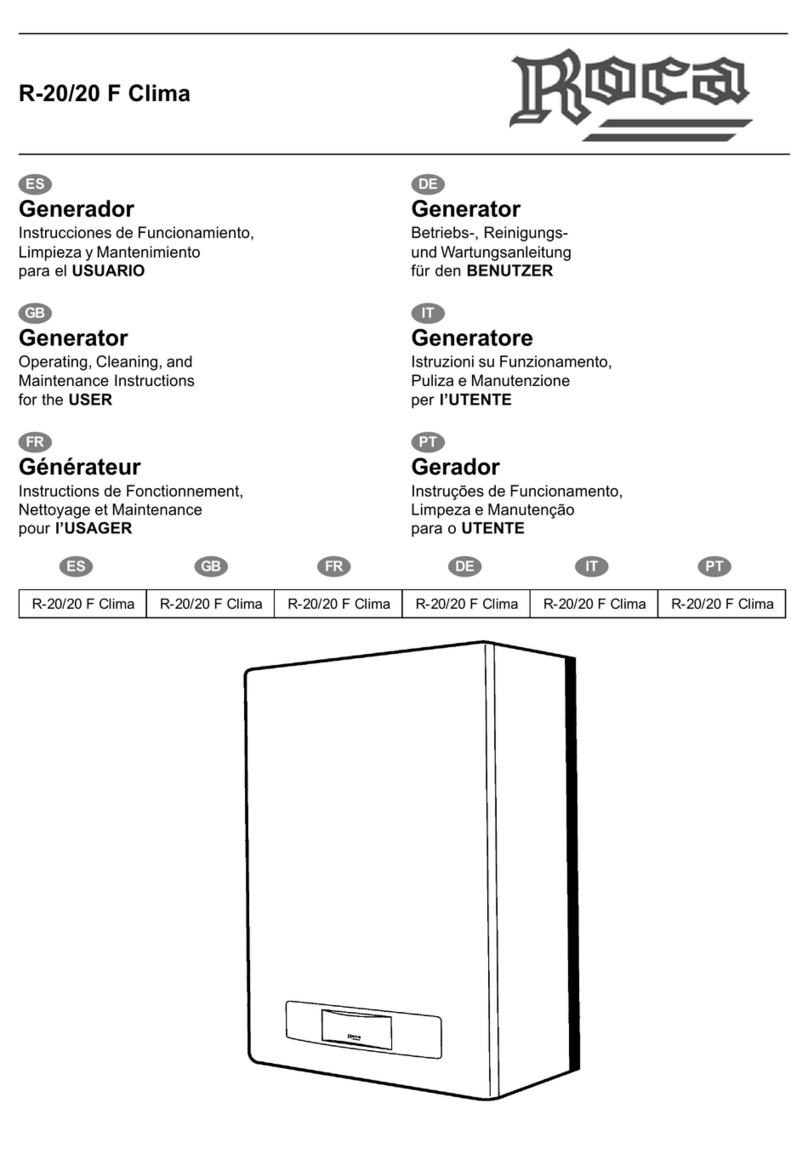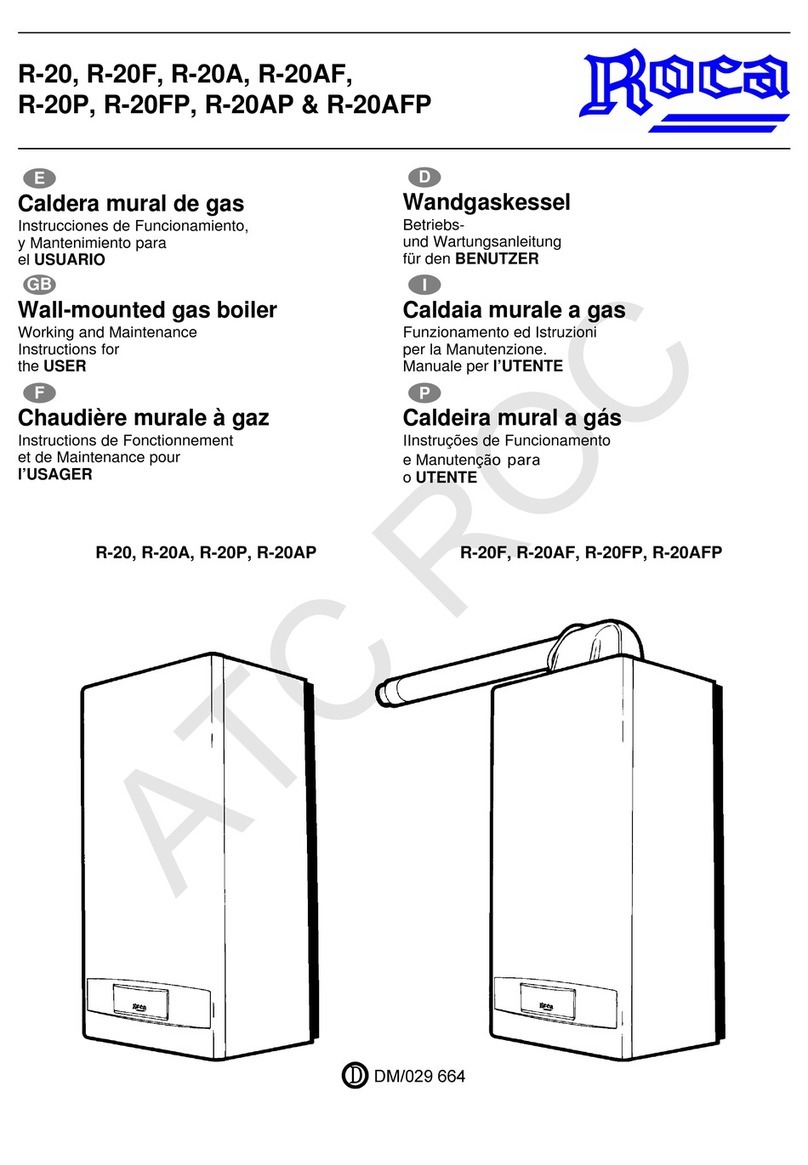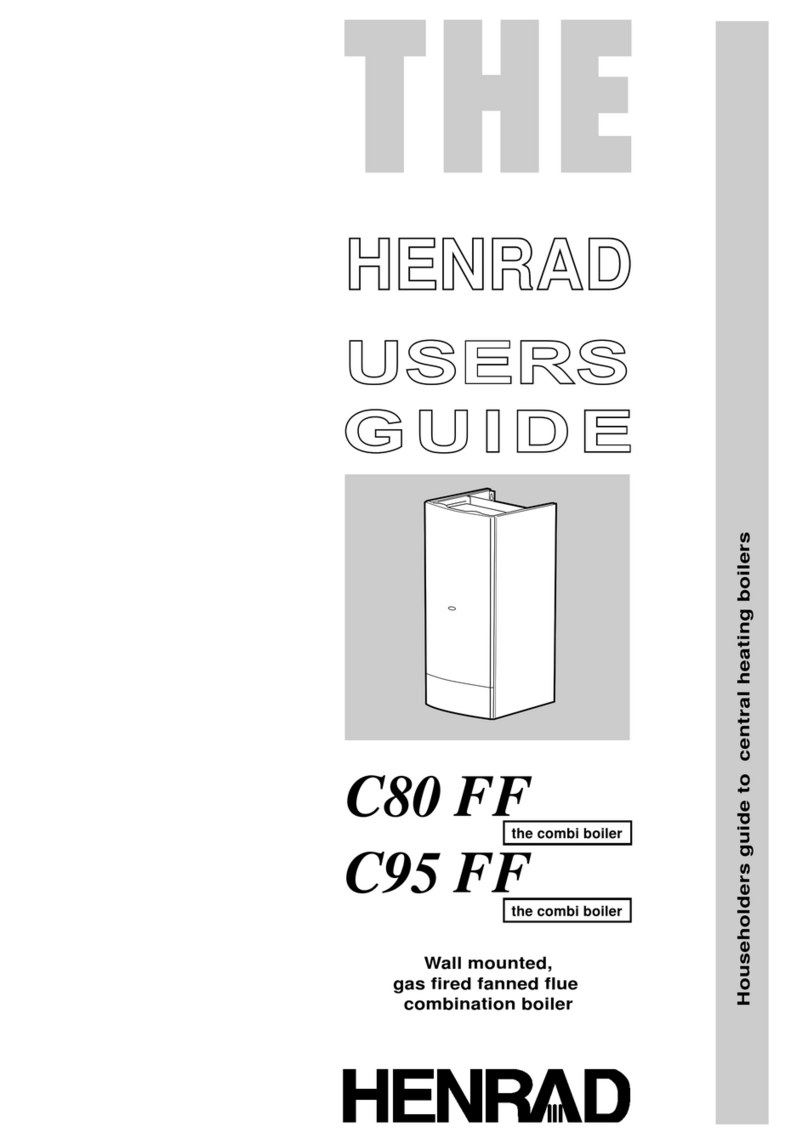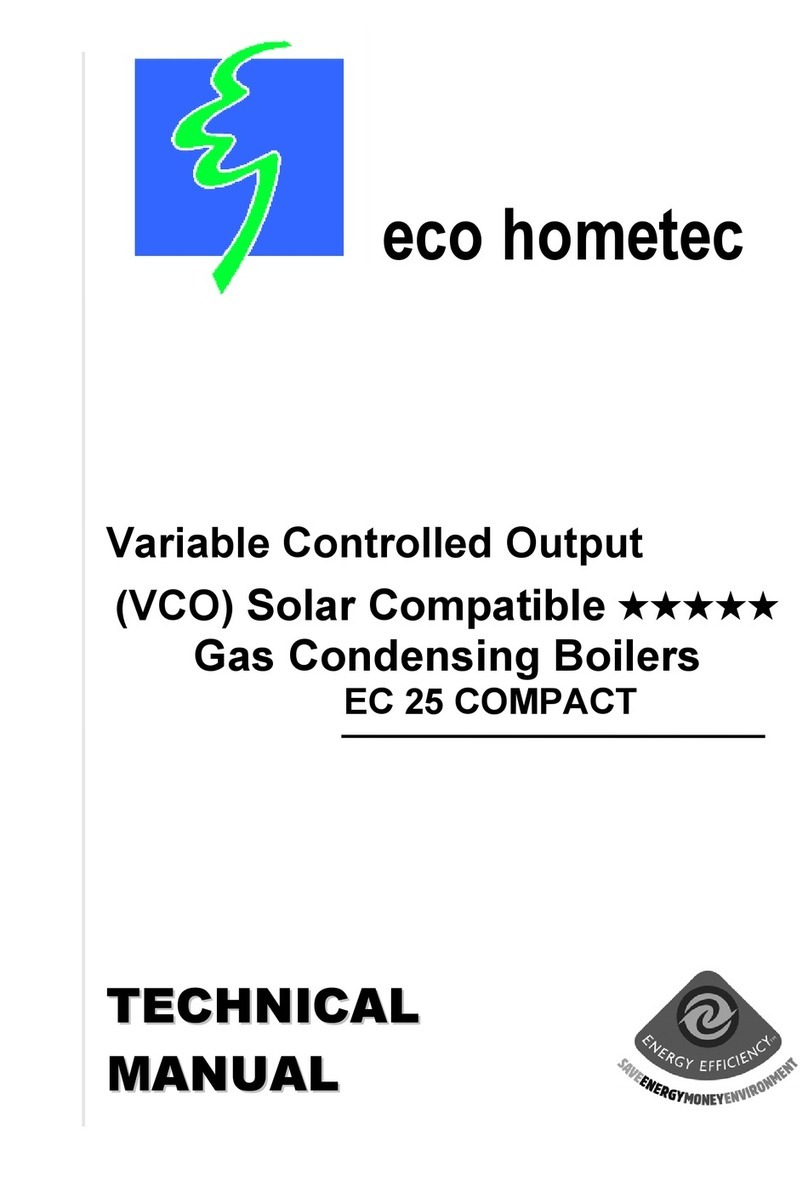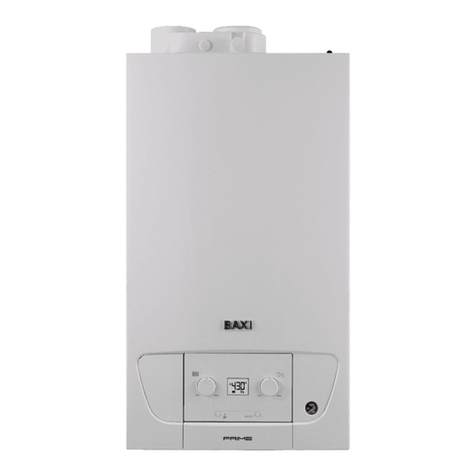6
The P-10 boiler that you have chosen for your installation is
basicallymadeupfromcast-ironsectionsandsoitisaproduct
ofunbeatablequalitythatwillprovideyouwiththeconvenience
of individual central heating for many years. You will obtain
the level of comfort that you expect from its use.
In this information we offer you the main features of the boiler
as well as the operations that are necessary for its correct
performance and proper maintenance.
We are at your disposal through your Installer to solve any
problem that might arise.
Main features
Boiler type
Heat output
kcal/h
1) Solid fuel Fluid fuel
P-10-3
P-10-4
P-10-5
7.000
10.000
13.000
10.000
14.000
18.000
1) Output obtained with coal.
Maximum working temperature: 100°C
Maximum working pressure: 4 bar
Operation
Checks and operations to follow at the beginning and end of
each heating season, and also while using the boiler.
Operations prior to the first lighting
1 - Check that the installation flow and return cocks, if there
are any, are open.
2 - Check that the installation is full of water and that the fixed
pointer on the altitude or combined temp./altitude gauge
has been placed by the Installer in the position which
corresponds to the static head of the system. (See figure)
3 - Check the pump for correct operation. To do this, remove
theturn and bleed control plug (10)with a screwdriver and
look at the shaft*.
* After long periods of non-use, the pump may have become jammed.
In this case, press a screwdriver into the slot on the shaft-end and at
the same time, turn it.
4 - Bleed the air from the installation and radiators.
5 - In installations with asealedexpansionvessel, top up with
water (if necessary) until the mobile pointer on the altitude
orcombinedtemp./altitudegaugeisslightly above the fixed
one. Where an open expansion vessel has been installed,
refill until the mobile pointer levels with the fixed one.
First lighting with solid fuels
6 - Check that the damper (11)inthesmokehood(12) isopen;
otherwise open it by turning the handle (13). Get the end
of the handle (13) to point at the letter “A” (open) on the
smokehood.
7 - Open the ashpit door (8) by turning its handle (14).
8 - Lower the front section grille (15) hinged on the built-in
section brackets (16) and leave it upside down.
9 - Put a sufficient amount of straw or paper, kindling or coal
on the grate bars (17) so as to aid lighting up.
While doing this, keep the firedoor (7) and its observation
window(18) closed. Thelatterwillbekeptopenonlywhen
using fuel with an excessive content of volatile material
requiring a secondary supply of air for burning.
GB 10 - Switch on the system circulating pump.
11 - Followingtheinitialcombustion, put the grille (15)backin
its original position and close the ashpit door (8).
12 - Openthefiredoor and stoke with the chosenfuel,loading
it so as not to smother the fire, to an appropriate level.
Close the firedoor and check that there no leaks of flue
gases.
13 - Adjustment ofthe automatic damperregulator (6)will have
been done by the Installer. Nevertheless, if you have to
setit,proceedaccordingtotheinstructionsthatcomewith
it.
14 - Bleed all the radiators and ensure that they reach the
required operating temperature in accordance with that
selected on the damper regulator (6).
First lighting with fluid fuels
6 - Checkthatthedamper (11)inthesmokehood(12)is open;
otherwise open it by turning the handle (13). Get the end
of the handle (13) to point at the letter “A” (open) on the
smokehood.
7 - Turn ON the main switch for the power supply to reach
the control panel (19).
8 - TurnONtheswitch(1)onthecontrol panel to start upthe
system pump.
9 - TurnONtheswitch(2)onthecontrol panel to start upthe
burner and check its running against the instructions that
come with it.
10 - Set the control thermostat (3) on the control panel to the
required temperature. A minimum temperature of 60 ºC
is recommended.
Where an ambient thermostat has been installed, set its
dial in the position corresponding to the chosen indoor
temperature.
11 - Bleed all the radiators and ensure that they reach the
required operating temperature in accordance with that
selected on the control thermostat (3).
Cleaning
The cleaner the boiler is kept the lower will fuel consumption
be. Foreverymillimetrethicknessof soot adheringtoitsinterior
surfaces, consumption increases by approximately 3%.
To aid operating and cleaning the boiler, a set of tools is
supplied,comprising:
20 - Shovel
21 - Scraper
22 - Slice bar
23 - Flue brush & handle
The shovel (20) is used in stoking the boiler, for putting solid
fuel in the combustion chamber, as well as for gathering and
withdrawing cinders from the ash-pan.
The scraper (21) permits drawing ashes and slag which might
have fallen on the base of the boiler, from the back to a more
accessible place for gathering and withdrawing.
The slice bar (22) eases cleaning of the grates in such a way
thatwithits helpthecinderswhich haveremainedonthe surface
can fall onto the ash-pan. It can also be used –if necessary–
for stirring up the solid fuel.
Thefluebrush(23)isusedfor cleaning thefluesandtheinterior
walls of the boiler.
Using solid fuels
Before each stoking proceed to:
1 - Open the ashpit door (8) using its handle (14), lower the
front section grille (15) as described in point 8 of the “First
lighting with solid fuels” section and use the slice bar (22)
to remove cinders from the grate bars, which will drop into
the ash-pan (24).
2 - Put the front section grille (15) back in position, withdraw
theash-pan(24)and,withtheaidoftheshovel(20),empty
it. Replace the empty ash-pan and close the ashpit door.
